1. Barbiellini Amidei C, Salmaso L, Bellio S, Saia M. Epidemiology of traumatic spinal cord injury: a large population-based study. Spinal Cord. 2022; 60(9):812–819. PMID:
35396455.

2. New PW, Guilcher SJT, Jaglal SB, Biering-Sørensen F, Noonan VK, Ho C. Trends, challenges, and opportunities regarding research in non-traumatic spinal cord dysfunction. Top Spinal Cord Inj Rehabil. 2017; 23(4):313–323. PMID:
29339907.

3. New PW, Cripps RA, Bonne Lee B. Global maps of non-traumatic spinal cord injury epidemiology: towards a living data repository. Spinal Cord. 2014; 52(2):97–109. PMID:
23318556.

4. New PW, Marshall R. International Spinal Cord Injury Data Sets for non-traumatic spinal cord injury. Spinal Cord. 2014; 52(2):123–132. PMID:
23295473.

5. New PW, Reeves RK, Smith É, Townson A, Eriks-Hoogland I, Gupta A, et al. International retrospective comparison of inpatient rehabilitation for patients with spinal cord dysfunction epidemiology and clinical outcomes. Arch Phys Med Rehabil. 2015; 96(6):1080–1087. PMID:
25743728.

6. Smith É, Fitzpatrick P, Lyons F, Morris S, Synnott K. Epidemiology of non-traumatic spinal cord injury in Ireland - a prospective population-based study. J Spinal Cord Med. 2022; 45(1):76–81. PMID:
32406815.

7. Halvorsen A, Pettersen AL, Nilsen SM, Halle KK, Schaanning EE, Rekand T. Non-traumatic spinal cord injury in Norway 2012-2016: analysis from a national registry and comparison with traumatic spinal cord injury. Spinal Cord. 2019; 57(4):324–330. PMID:
30552411.

8. Choi Y, Kim YE, Leigh JH, Lee YS, Kim HK, Yi YG, et al. Comparison of trends in the incidence of traumatic spinal cord injury in daily life, automobile accidents, and industrial accidents: a national multi-insurance study. J Korean Med Sci. 2023; 38(7):e26. PMID:
36808542.

9. New PW, Sundararajan V. Incidence of non-traumatic spinal cord injury in Victoria, Australia: a population-based study and literature review. Spinal Cord. 2008; 46(6):406–411. PMID:
18071356.

10. Noonan VK, Fingas M, Farry A, Baxter D, Singh A, Fehlings MG, et al. Incidence and prevalence of spinal cord injury in Canada: a national perspective. Neuroepidemiology. 2012; 38(4):219–226. PMID:
22555590.

11. New PW, Farry A, Baxter D, Noonan VK. Prevalence of non-traumatic spinal cord injury in Victoria, Australia. Spinal Cord. 2013; 51(2):99–102. PMID:
22665222.

12. Choi Y, Kim EY, Sun J, Kim HK, Lee YS, Oh BM, et al. Incidence of depression after traumatic brain injury: a nationwide longitudinal study of 2.2 million adults. J Neurotrauma. 2022; 39(5-6):390–397. PMID:
34931535.

13. Kim HK, Leigh JH, Lee YS, Choi Y, Kim Y, Kim JE, et al. Decreasing incidence and mortality in traumatic brain injury in Korea, 2008-2017: a population-based longitudinal study. Int J Environ Res Public Health. 2020; 17(17):6197. PMID:
32859061.

14. Jeon I, Leigh JH, Ro JS, Ro YS, Lee SH, Shin HI, et al. Trends in the incidence of work-related traumatic limb amputations in South Korea from 2004 to 2013. Prosthet Orthot Int. 2019; 43(4):409–417. PMID:
30922171.

15. He W, Goodkind D, Kowal P, Almasarweh IS, Giang TL, Islam MM, et al. Asia Aging: Demographic, Economic, and Health Transitions. Suitland-Silver Hill, MD, USA: U.S. Census Bureau;2022.
16. Cheol Seong S, Kim YY, Khang YH, Heon Park J, Kang HJ, Lee H, et al. Data resource profile: the national health information database of the National Health Insurance Service in South Korea. Int J Epidemiol. 2017; 46(3):799–800. PMID:
27794523.

17. Song SO, Jung CH, Song YD, Park CY, Kwon HS, Cha BS, et al. Background and data configuration process of a nationwide population-based study using the Korean national health insurance system. Diabetes Metab J. 2014; 38(5):395–403. PMID:
25349827.

18. Yoon HK, Park C, Jang S, Jang S, Lee YK, Ha YC. Incidence and mortality following hip fracture in Korea. J Korean Med Sci. 2011; 26(8):1087–1092. PMID:
21860561.

19. Jaglal SB, Voth J, Guilcher SJ, Ho C, Noonan VK, McKenzie N, et al. Creation of an algorithm to identify non-traumatic spinal cord dysfunction patients in Canada using administrative health data. Top Spinal Cord Inj Rehabil. 2017; 23(4):324–332. PMID:
29339908.

20. Kim HJ, Fay MP, Feuer EJ, Midthune DN. Permutation tests for joinpoint regression with applications to cancer rates. Stat Med. 2000; 19(3):335–351. PMID:
10649300.

21. McCaughey EJ, Purcell M, McLean AN, Fraser MH, Bewick A, Borotkanics RJ, et al. Changing demographics of spinal cord injury over a 20-year period: a longitudinal population-based study in Scotland. Spinal Cord. 2016; 54(4):270–276. PMID:
26458974.

22. Derrett S, Beaver C, Sullivan MJ, Herbison GP, Acland R, Paul C. Traumatic and non-traumatic spinal cord impairment in New Zealand: incidence and characteristics of people admitted to spinal units. Inj Prev. 2012; 18(5):343–346. PMID:
22544829.

23. Lee BS, Kim O, Ham D. Epidemiologic changes in nontraumatic spinal cord injury for the last 30 years (1990-2019) in South Korea. Spinal Cord. 2022; 60(3):268–273. PMID:
34453110.

24. Shin JC, Kim DH, Yu SJ, Yang HE, Yoon SY. Epidemiologic change of patients with spinal cord injury. Ann Rehabil Med. 2013; 37(1):50–56. PMID:
23525183.

25. Kim HS, Lim KB, Kim J, Kang J, Lee H, Lee SW, et al. Epidemiology of spinal cord injury: changes to its cause amid aging population, a single center study. Ann Rehabil Med. 2021; 45(1):7–15. PMID:
33557481.

26. Yoon D, Kim KE, Lee JE, Kim M, Kim JH. Impact of the coronavirus disease 2019 (COVID-19) pandemic on medical use of military hospitals in Korea. J Korean Med Sci. 2021; 36(28):e204. PMID:
34282607.

27. Kang E, Yun J, Hwang SH, Lee H, Lee JY. The impact of the COVID-19 pandemic in the healthcare utilization in Korea: analysis of a nationwide survey. J Infect Public Health. 2022; 15(8):915–921. PMID:
35872432.

28. Lee DY, Yang JH, Ki CH, Ko MS, Suk KS, Kim HS, et al. Relationship between bone mineral density and spinal muscle area in magnetic resonance imaging. J Bone Metab. 2015; 22(4):197–204. PMID:
26713311.

29. Karsy M, Chan AK, Mummaneni PV, Virk MS, Bydon M, Glassman SD, et al. Outcomes and complications with age in spondylolisthesis: an evaluation of the elderly from the quality outcomes database. Spine (Phila Pa 1976). 2020; 45(14):1000–1008. PMID:
32097272.
30. Majid K, Fischgrund JS. Degenerative lumbar spondylolisthesis: trends in management. J Am Acad Orthop Surg. 2008; 16(4):208–215. PMID:
18390483.

31. Deer T, Sayed D, Michels J, Josephson Y, Li S, Calodney AK. A review of lumbar spinal stenosis with intermittent neurogenic claudication: disease and diagnosis. Pain Med. 2019; 20(Suppl 2):S32–S44. PMID:
31808530.

32. Issack PS, Cunningham ME, Pumberger M, Hughes AP, Cammisa FP Jr. Degenerative lumbar spinal stenosis: evaluation and management. J Am Acad Orthop Surg. 2012; 20(8):527–535. PMID:
22855855.
33. Ide M, Ogata H, Tokuhiro A, Takechi H. Spinal cord injuries in Okayama Prefecture: an epidemiological study ’88-’89. J UOEH. 1993; 15(3):209–215. PMID:
8378665.

34. Kim HK, Leigh JH, Choi Y, Lee JH, Bang MS. Spinal cord injury fact sheet in Korea. Ann Rehabil Med. 2023; 47(1):4–10. PMID:
36880194.

35. Han ZA, Lee BS, Kim W, Lee SJ, Im HJ, Kim C, et al. People with spinal cord injury in Korea. Am J Phys Med Rehabil. 2017; 96(2):Suppl 1. S83–S85. PMID:
28059886.

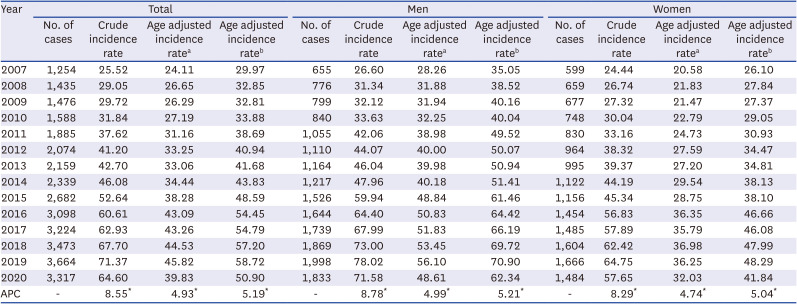
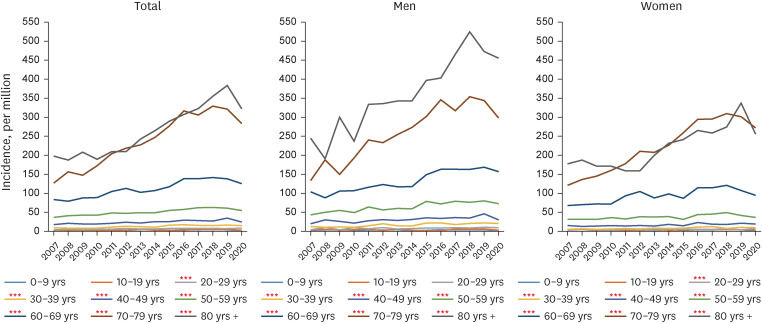
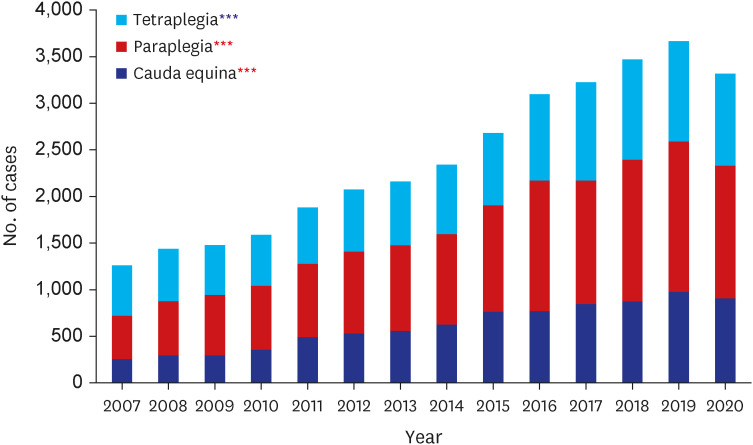
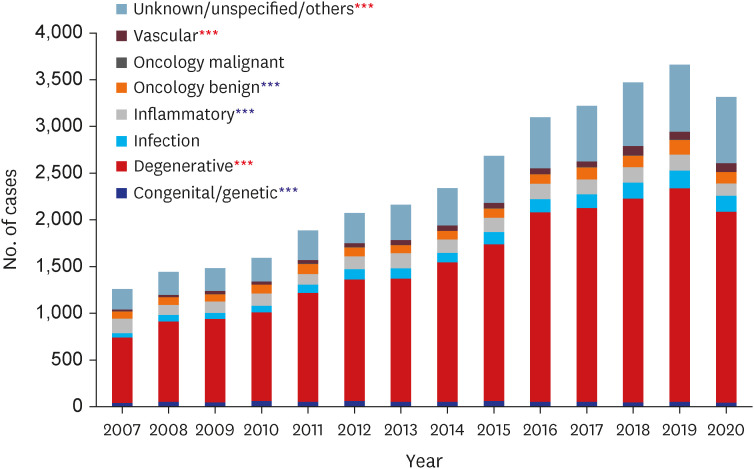
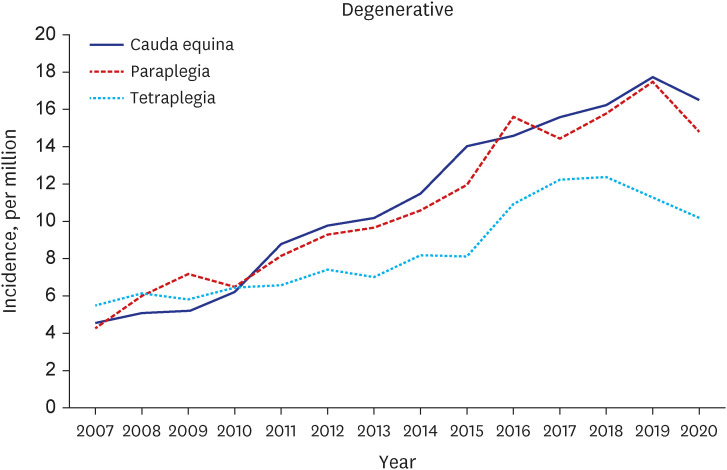




 PDF
PDF Citation
Citation Print
Print



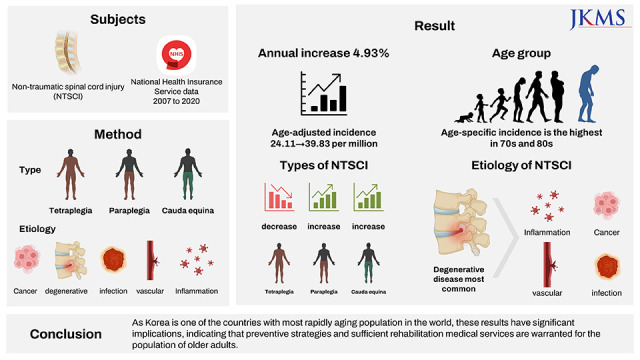
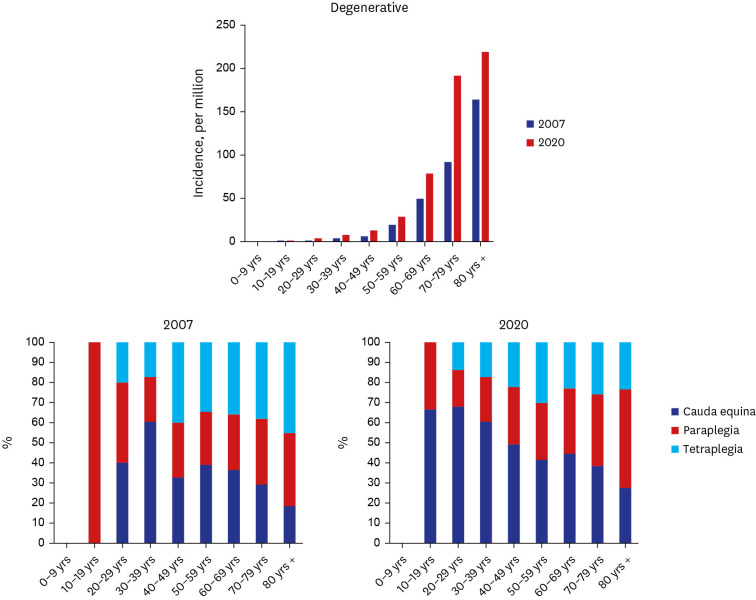
 XML Download
XML Download